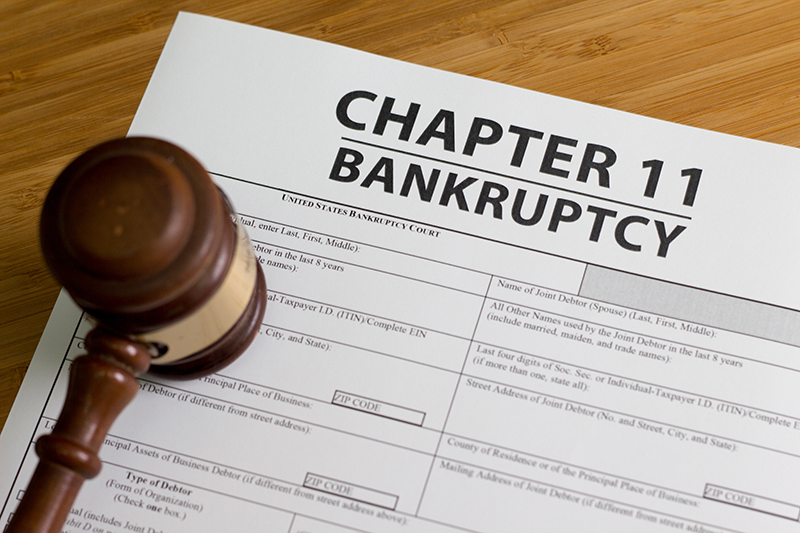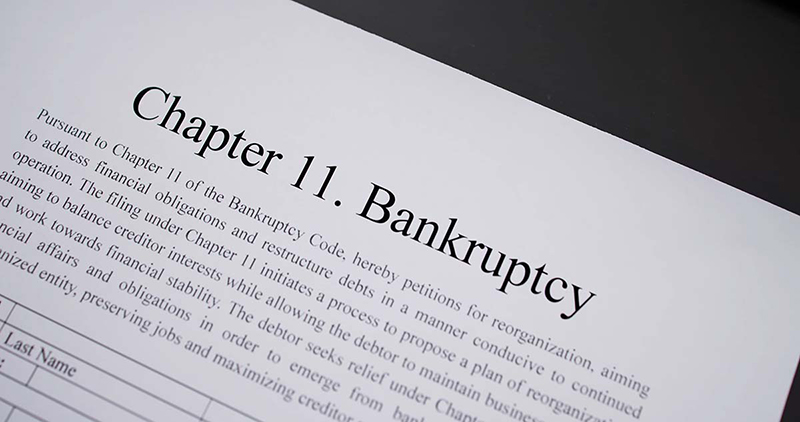Are you considering bankruptcy and seeking clarification on the distinctions between Chapter 11 and Chapter 13?
Filings for Chapters 11 and 13 both increased in 2022. Chapter 11, which provides for reorganization, usually involving a corporation, increased 1.7 percent, to 4,918, compared with 4,836 in the previous year. Chapter 13 filings increased 30.9 percent, from 120,002 to 157,087 in 2022. [1]
What is Chapter 11 Bankruptcy?
Chapter 11 bankruptcy allows businesses to reorganize and continue their operations while repaying their creditors. It is often referred to as “reorganization bankruptcy” and is designed to help struggling companies overcome financial difficulties and avoid liquidation. [1]
This type of bankruptcy is primarily used by large corporations, but it can also be utilized by small businesses and individuals with significant debts.
Under Chapter 11 bankruptcy, a company and its creditors work together to create a plan of reorganization. This plan outlines how the company will repay its debts over time, usually through reduced payments or extended repayment periods. The goal is to achieve a balance between meeting the needs of the creditors and allowing the company to regain financial stability.
Chapter 11 bankruptcy also has an automatic stay provision. When a company files for Chapter 11, an automatic stay is put into effect, which halts all collection efforts and legal actions by creditors. This gives the company some breathing room to focus on its restructuring efforts without the constant threat of lawsuits, repossessions, or foreclosure.

What is Chapter 13 Bankruptcy?
Chapter 13 bankruptcy, also known as a wage earner’s plan, is a form of bankruptcy that allows individuals with a steady income to repay their debts over a specified period of time. Chapter 13 bankruptcy offers debtors a realistic opportunity to catch up on missed payments and organize their financial affairs.
One of the main benefits of Chapter 13 bankruptcy is that it allows debtors to keep their property while setting up a manageable repayment plan. This chapter is particularly helpful for individuals who have a regular income but struggle to meet their financial obligations due to unforeseen circumstances such as medical expenses or job loss.
One significant advantage of Chapter 13 bankruptcy is that it can stop foreclosure proceedings and allow debtors to save their homes from being repossessed.
Chapter 13 bankruptcy also offers debtors the chance to restructure other secured debts, such as car loans, and reduce interest rates or even loan balances in some cases. It provides a means for debtors to consolidate their unsecured debts, such as credit card debt or medical bills, into a single monthly payment, often at a reduced amount.
When Would I Choose Chapter 11 over Chapter 13 Bankruptcy?
Chapter 11 bankruptcy is primarily intended for businesses but can also be used by individuals with significant assets and income. The main objective of Chapter 11 is to allow the debtor to reorganize their financial affairs and create a plan to repay their debts over time while continuing their operations.
One of the prominent advantages of Chapter 11 bankruptcy is the flexibility it provides to debtors. Unlike Chapter 13, there are no strict limits on the amount of debt owed or the income earned by the debtor. This makes it a suitable choice for those with substantial debt who are looking to restructure their obligations and pay creditors over an extended period.
Chapter 11 bankruptcy allows debtors to retain control of their assets and continue running their business operations. This can be crucial for businesses that contribute significantly to the debtor’s income and livelihood. The debtor becomes a “debtor in possession,” meaning they retain decision-making authority over their assets, while also having access to financing options to support their reorganization efforts.
Another situation where Chapter 11 may be preferable over Chapter 13 is when the debtor needs to seek relief from creditor lawsuits or collection efforts. This is because the automatic stay offered under Chapter 11 bankruptcy protects the debtor from legal actions by creditors, giving them time to negotiate a viable repayment plan.

When Would I Choose Chapter 13 over Chapter 11?
Chapter 13 bankruptcy provides individuals with a manageable path toward debt repayment. It is often referred to as a “wage earner’s plan” since it allows individuals with regular income to restructure their debts while retaining their assets.
Unlike Chapter 11, this bankruptcy option is more accessible and less costly, making it an appealing choice for individuals struggling with overwhelming debt.
One factor that distinguishes Chapter 13 from Chapter 11 bankruptcy is the treatment of priority debts. Priority debts, which often include taxes and domestic support obligations, must be paid in full through a Chapter 13 repayment plan.
In contrast, Chapter 11 allows businesses to prioritize payment to some creditors while restructuring or reducing debts owed to others.
For individuals who cannot completely satisfy their priority debts, Chapter 13 provides a valuable opportunity to formulate a feasible repayment plan while ensuring compliance with legal obligations.
Under Chapter 13, there are certain income thresholds that determine eligibility. Debtors exceeding these limits may have to file under Chapter 11 if they wish to seek bankruptcy relief.
What are the Pros and Cons of Chapter 11 Bankruptcy?

Pros
One of the biggest advantages of filing for Chapter 11 bankruptcy is the ability to continue operating the business during the restructuring process. Chapter 11 allows businesses to keep their doors open and continue generating revenue.
By having an approved repayment plan, old debts can be restructured and repaid in a more manageable manner, potentially saving the business from complete financial ruin.
Another advantage of Chapter 11 bankruptcy is that it gives businesses the chance to terminate unprofitable contracts and leases. This can allow them to shed burdensome obligations and focus on more profitable aspects of their operations. It provides the opportunity to renegotiate terms with suppliers and lenders, which can lower the overall debt burden and improve the chances of future financial success.
Cons
Despite the potential benefits, Chapter 11 bankruptcy also has its drawbacks. The process can be complex and time-consuming, often requiring the assistance of bankruptcy attorneys and financial advisors.
The associated legal and professional fees can be substantial, adding to the debt burden already faced by the debtor. The business or individual filing for Chapter 11 bankruptcy may face increased scrutiny and public disclosure of their financial situation, potentially damaging their reputation and relationships with customers and suppliers.
Chapter 11 bankruptcy may not be suitable for all businesses or individuals. Not all businesses will successfully emerge from Chapter 11 bankruptcy. Challenging market conditions, inability to execute the proposed restructuring plan, or other unforeseen circumstances can lead to the failure of the reorganization and ultimately the closure of the business.
What are Pros and Cons of Chapter 13 Bankruptcy?
Pros
One of the main benefits of Chapter 13 bankruptcy is the ability to avoid foreclosure and keep your home. By creating a repayment plan, debtors can catch up on their mortgage arrears over the course of several years, effectively preventing their homes from being seized by lenders. This gives debtors a chance to protect their most significant asset – their home – while still addressing their other debts in a manageable manner.
Another advantage of Chapter 13 bankruptcy is the opportunity to create a more affordable repayment plan. Under this chapter, debtors can consolidate all eligible debts and make a single monthly payment to a bankruptcy trustee. The trustee then distributes funds to the creditors as per the established plan.
This consolidated payment can often be significantly lower than the combined payments a debtor would have to make outside of bankruptcy. This allows the debtor to create a realistic budget and work towards their financial recovery without the constant pressure of multiple creditors.

Cons
One of the notable downsides is the extended repayment period. While it provides the opportunity to pay off debts within three to five years, this can be a significant commitment for individuals who prefer a more immediate resolution. The length of the repayment plan means that debtors must adhere to a tight budget and make consistent payments over an extended period.
Chapter 13 bankruptcy requires debtors to have a regular income to qualify for this form of bankruptcy. Individuals without stable employment, or those who are solely reliant on irregular income sources, may face challenges in pursuing Chapter 13 bankruptcy.
Frego Law can help you better determine whether Chapter 11 or Chapter 13 bankruptcy is right for you. Contact Frego Law today to schedule a free consultation.
FAQs
The key differences in the repayment plans under Chapter 11 and Chapter 13 bankruptcy lie in their purpose and scope. In Chapter 11 bankruptcy, the repayment plan is primarily focused on reorganizing and restructuring the debts of businesses or individuals with significant assets and liabilities. Chapter 13 bankruptcy is geared towards individuals with regular income who want to create a manageable repayment plan to satisfy their debts over a period of three to five years.
Typically, Chapter 13 bankruptcy lasts for three to five years. During this period, the debtor is required to make regular monthly payments to a bankruptcy trustee who then distributes the funds to creditors. The debtor must follow the court-approved repayment plan diligently to successfully complete the bankruptcy process. Once all payments have been made, and the plan term is completed, the bankruptcy court will issue a discharge, relieving the debtor from remaining unsecured debts.
Unlike Chapter 13 bankruptcy, which typically lasts for three to five years, Chapter 11 bankruptcy is a more lengthy and complex process. It involves the reorganization of businesses or individuals with extensive assets and liabilities. The debtor must propose a reorganization plan to the court, which outlines how they will repay their debts over time. This plan must be approved by the creditors and the court. The timeline for completing Chapter 11 bankruptcy can range from several months to several years, depending on the negotiations, court hearings, and the successful implementation of the reorganization plan.
Sources:
[1] Bankruptcy Filings Drop 6.3 Percent. (2023, February 6). United States Courts. https://www.uscourts.gov/news/2023/02/06/bankruptcy-filings-drop-63-percent
[2] Overview Of Bankruptcy Chapters. (2022, March 2). https://www.justice.gov/ust/bankruptcy-fact-sheets/overview-bankruptcy-chapters




